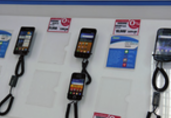Economic update | Indonesia: Telecoms changes
Interviews & Viewpoints | OBG talks to John Mangos, CEO, Digicel (PNG) from The Report: Papua New Guinea 2012
How you would assess the latest developments and investments taking place in the telecoms sector?
Articles & Analysis | On it grows: Little sign of a slowdown as providers diversify products and services in line with market demand from The Report: Papua New Guinea 2012
After a half century of state monopoly control, the telecoms market in Papua New Guinea underwent liberalisation in 2007, resulting in a rapid increase in the sector’s value and contributing an estimated 2.5% to annual GDP growth in 2010.
Interviews & Viewpoints | OBG talks to Jim Miringtoro, Minister for Communication and Information Technology from The Report: Papua New Guinea 2012
What key information and communications technology (ICT) reforms are currently under way?
Interviews & Viewpoints | OBG talks to Charles Punaha, CEO, National Information and Communications Technology Authority (NICTA) from The Report: Papua New Guinea 2012
In which ways have NICTA’s market liberalisation policies affected the telecommunications sector?





